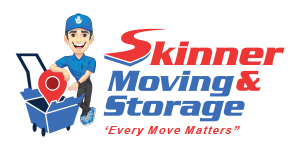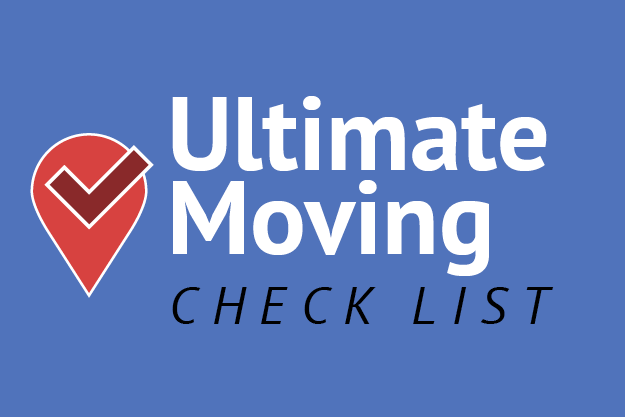Moving an office is a coordinated effort that, when planned well, protects revenue, safeguards equipment, and shortens productivity loss. This guide gives Jacksonville business leaders a practical, step-by-step relocation checklist focused on minimizing downtime and keeping critical systems running through planning, packing, move day, and post-move follow-up. You’ll find a phased timeline from 6–12 months out through post-move audits, clear inventory and packing tactics, a vendor‑neutral IT relocation checklist, and on-the-ground execution tips to limit interruptions. The guide assigns responsibilities for internal move teams, explains supplier coordination, and includes ready-to-use tables and numbered lists for planning and delegation. Where useful, we reference local commercial-moving options and show how coordinated vendor selection shortens outage windows and protects sensitive assets.
How Do Jacksonville Businesses Plan an Effective Office Relocation Timeline?
A clear relocation timeline breaks the project into phases so tasks are scheduled, dependencies are tracked, and expected downtime is identified early. Phased planning highlights critical-path items—lease handovers, network provisioning, and regulated record transfers—that can derail a move if left until the last minute. Early milestone planning secures vendor availability for off-hours work, creates time to pre-stage equipment, and provides slots to validate services, all of which reduce business disruption. The sections that follow outline practical actions for a 6–12 month schedule and explain how to form an internal move team that keeps the project moving and minimizes surprises.
What Are the Key Steps in a 6-12 Month Office Move Timeline?
Start with a strategic assessment that defines scope, budget, and the systems you must protect—this becomes your baseline for minimizing downtime. Conduct site visits to document power, cooling, and telecom at the new location, and include those findings in vendor RFIs so providers can price discrete reconnection windows. Lock in major procurements early—cable installers, movers, and storage providers often book weeks in advance—so you can secure off-hours work without premium conflicts. Finally, hold milestone reviews every 4–6 weeks and include contingency for high‑risk items; this steady cadence reduces late surprises and gives teams time to rehearse moving‑day tasks.
How Do You Form an Office Relocation Team for Jacksonville Businesses?
Put together a cross‑functional relocation team with clear roles so decisions are fast and escalation paths are obvious. Appoint a single move coordinator to own the timeline, vendor communications, and the move manifest; name an IT lead to manage systems inventory and cutover plans; assign a facilities lead for site logistics; and have department reps verify workspace and equipment needs. Agree on meeting cadence and use a simple RACI-style matrix so every task has an owner and deadline—this reduces duplicated effort and miscommunication. That governance keeps on‑the‑day decisions moving quickly and protects operational priorities through execution.
The timeline phases below summarize common tasks and the likely impact on downtime when those tasks are completed on schedule. moving services
Different timeline phases map to distinct actions and outcomes:
| Phase |
Key Tasks |
Typical Timeframe & Impact |
| Strategic Planning |
Budgeting, lease reviews, site surveys, appoint move coordinator |
6–12 months; reduces last-minute vendor costs and scheduling conflicts |
| Design & Procurement |
IT/site specifications, hire cabling/contractors, procure furniture |
3–6 months; enables pre-staging and service ordering to cut reconnection time |
| Pre-Move Validation |
Inventory, tagging, packing windows, mock cutover runs |
1–3 months; minimizes surprises and shortens move-day downtime |
| Final Prep & Staging |
Labeling, critical-path scheduling, off-hours move planning |
2–4 weeks; ensures staging and reconnection slots are reserved |
| Move & Cutover |
Physical move, IT switchovers, first-day support |
Moving day; well-orchestrated moves finish critical reconnections within scheduled windows |
| Post-Move Optimization |
Testing, unpacking, regulatory updates, follow-up audits |
1–4 weeks post-move; restores full productivity and performance validation |
What Are the Best Practices for Pre-Move Logistics and Inventory Management?
Pre-move logistics rely on accurate inventories, deliberate decluttering, and consistent packing protocols that protect value while speeding unpacking and reconnection. A complete audit produces an asset register identifying working equipment, redundancies, and items needing secure destruction or special handling; this register becomes the single source of truth for vendor quotes and manifests. Use standardized labels and a simple color code for departments and priority so movers and IT can sequence reinstallation without searching. The next sections walk through a stepwise audit and packing strategies that protect electronics, records, and furniture while enabling efficient staging.
How Should Jacksonville Offices Audit and Declutter Before Moving?
Begin by sorting assets into keep, surplus, donate, recycle, and confidential disposal so only necessary items appear on the move manifest. Log serial numbers, warranty status, network dependencies, and condition to support insurance, quotes, and disposal timelines; keep chain‑of‑custody notes for regulated records to stay compliant. Require stakeholder sign‑off on disposition decisions to prevent scope creep, and schedule donation or disposal pickups early so they don’t conflict with packing windows. This audit-driven approach reduces move volume and lowers the number of items needing careful handling—directly shortening move windows and reducing reconnection work.
What Packing Strategies Ensure Safe and Efficient Office Moves?
Use packing standards by asset class—files, electronics, furniture, fragile items—and require labeled first-day boxes with critical supplies and user essentials so teams can get working fast. Apply tamper-evident seals for confidential records and bag and label network cables, console keys, and port maps with device inventories. Professional commercial packing speeds the process and cuts the risk of damage to costly equipment; clear manifests let IT prioritize workstation reactivation. Finish packing with a physical spot check of manifests to catch missing items that would delay reconnections.
Packing materials and labeling conventions that protect equipment and speed reassembly:
- Essential materials: sturdy cartons, anti-static foam, cable bags, document boxes
- Labeling conventions: location → department → asset ID → priority
- Special handling: servers and storage media follow powered-down protocols and travel in separate transport containers
These packing rules reduce handling errors and create a clear handoff between movers and IT. The next section provides a focused IT relocation checklist for Jacksonville moves.
How Can Jacksonville Businesses Manage IT Relocation to Ensure Business Continuity?
IT relocation planning protects data, preserves network architecture, and sequences reconnection so services come back online in prioritized waves instead of an all-or-nothing cutover. The essentials are a complete asset inventory, validated backups, coordinated ISP/VoIP cutovers, and documented shutdown/restart sequences for each server and network device. Pre-staging equipment and running dry-run reconnection tests help teams find cabling, port, and power issues before staff return, significantly lowering the risk of extended outages. The subsections that follow present a concise IT checklist and a component-level table to guide pre-move and post-move validation.
What Does an IT Office Relocation Checklist Include for Jacksonville Moves?
A practical IT checklist to limit downtime includes prioritized backups, clear labeling, scheduled disconnect/reconnect windows, and post-move acceptance testing for services and applications. Confirm full backups and test restores to ensure recoverability if transport issues occur, and produce a network map that documents IPs, VLANs, and port mappings for rapid reconfiguration. Schedule ISP and VoIP cutovers with confirmed install windows and escalation contacts, and combine workstation reboots with application login tests to validate user access. These steps give the technical team a repeatable sequence to reduce unpredictable downtime and enable controlled recoveries.
Essential IT steps summarized:
- Backup & Verify: complete full backups and validate restore tests
- Label & Map: tag devices and cable endpoints; export network diagrams
- Provider Coordination: schedule ISP/VoIP cutover windows and confirmations
- Dry Runs & Testing: pre-stage critical gear and run acceptance checks
The table below compares IT components, pre-move requirements, and post-move validation tasks to make responsibilities explicit.
| IT Component |
Pre-Move Requirement |
Post-Move Validation |
| Servers & Storage |
Full backups, shutdown scripts, transport crating |
Power-on sequence, RAID checks, application integrity tests |
| Network Switches & Routers |
Port mapping, config export, label cables |
Port assignment verification, VLAN testing, throughput checks |
| VoIP & Phone Systems |
Number porting plan, PSTN/VoIP provider windows |
Call test matrix, voicemail and routing validation |
| Workstations & Peripherals |
Asset tags, user data backup, serial catalogs |
User login, app access, peripheral driver checks |
How Do You Set Up New Office IT Infrastructure with Minimal Downtime?
Pre-wire network and power, specify dedicated circuits for servers, and confirm cooling at the new site to cut troubleshooting time after move-in. Pre-stage racks, switches, and core gear in a staging area, run dry‑run connections, and verify IP addressing and power sequencing while the old site is still online. Coordinate contractors and cabling crews so network ports are active and labeled before devices arrive, and reserve a short cutover window with power users to catch permission or application issues. These preparations shrink the reconnection window, allow safe rollbacks if needed, and give a clear path to restoring essential services quickly.
Before leaving IT setup, confirm the following in a standardized checklist:
- Port Verification: test each network port for link and speed
- Power & Cooling: validate dedicated circuits and rack cooling
- Pre-Stage Testing: boot key systems and run health checks
- User Acceptance: engage power users for final validation
As noted earlier, coordinated mover support can simplify handling IT assets; Skinner Moving & Storage offers IT relocation coordination and moving services to support technical leads during scheduling and transport, which can be aligned with vendor cutover windows to reduce logistical friction.
What Are Effective Strategies to Minimize Business Downtime on Moving Day?
Cutting downtime on move day depends on sequencing the move into prioritized waves, using off-hours or weekend windows where possible, and keeping clear on-site supervision and communication. Phased moves let critical teams migrate first and resume limited operations while other departments transition, reducing lost revenue time for customer-facing and production staff. Prepare first-day boxes and minimal workstations so essential staff can work immediately, and use staging zones for quick verification before items move into final workspaces. The sections below offer scheduling tactics, a comparison table of strategy impacts, and guidance on employee communication to keep productivity and client service steady during the move.
How Do You Schedule and Execute an Office Move for Minimal Downtime?
Break move day into defined phases—equipment staging, critical-path disconnects, transport windows, and prioritized reinstallation—so each team knows the sequence and timing. Assign on-site supervisors to each zone and an escalation protocol for issues that could extend downtime, and track progress on a visible move board to coordinate teams in real time. Reserve contingency slots for unexpected delays and confirm critical dependencies like ISP activation or elevator access in writing. Precise sequencing turns a chaotic day into coordinated intervals that protect uptime and bring critical services back online first.
Practical execution elements include:
- Staging areas: pre-check items before installation
- On-site supervisors: maintain move progress and resolve conflicts
- Contingency windows: buffer time for unforeseen events
The table below links common downtime-minimization strategies with implementation steps and expected reductions in business interruption.
| Strategy |
Implementation Steps |
Expected Downtime Reduction |
| Off-hours/Weekend Moves |
Schedule movers and IT after-hours; confirm building access |
30–70% reduction for customer-facing hours |
| Phased/Departmental Moves |
Move critical teams first, stagger others |
40–60% reduction by maintaining partial operations |
| Pre-Stage & Dry Runs |
Set up equipment in staging area, test restores |
20–50% reduction by catching issues early |
| Temporary Remote Work |
Prepare remote access and communication plans |
10–40% reduction by shifting non-critical work off-site |
Implementing robust maintenance strategies is essential to keep systems operational and productive.
Maintenance Strategies for Minimizing Downtime and Enhancing Productivity
By integrating these strategies with state-of-the-art optimization tools, organizations can achieve reduced downtime, lower operational costs, and improve the overall productivity and lifespan of their systems. Maintenance strategies and optimization techniques, M Yazdi, 2024
How Should Employee Communication Be Managed During an Office Relocation?
Build a communications playbook that sequences messages from kickoff through post-move follow-up so employees know expectations, remote-work options, and who to contact for issues. Give managers short templates for pre-move notices, day‑of checklists, and first-day instructions to keep messaging consistent and reduce confusion. Use multiple channels—email, intranet, and manager briefings—and include a quick-reference card for each employee with workstation setup steps and essential contacts. Clear, timely communication saves time, avoids duplicated effort, and reassures clients that service levels are being maintained during the transition.
A simple message cadence keeps everyone aligned:
- Kickoff: project goals and timeline
- Pre-move: packing schedules and remote-work instructions
- Day-of: status updates and first-day expectations
- Post-move: testing results and follow-up actions
With on-the-day supervision and proactive messaging, employees spend less time troubleshooting and more time returning operations to normal.
What Post-Move Tasks Help Jacksonville Businesses Optimize Their New Office Setup?
Post-move work focuses on validating systems, finishing prioritized unpacking, completing furniture assembly, and updating administrative records so the business regains full capacity quickly. Prioritize first-day boxes and key workstations so employees can handle essential functions while less-critical items are staged for later. Run a staged IT acceptance test that includes application logins, shared resource checks, and network performance testing, and schedule follow-up audits to catch any remaining issues. The following sections cover supervised unpacking and the administrative and IT updates needed to finalize the move.
How Do You Oversee Unpacking and Furniture Assembly Efficiently?
Assign supervised unpacking teams by department so first-day essentials are ready and furniture assembly follows a logical sequence that avoids rework. Coordinate assembly crews with IT reconnection teams so desks, cabling, and monitors are installed and tested together, and use the move manifest to verify delivered items against the inventory register. Prioritize critical workstations and shared spaces, and hold a brief post-assembly inspection to confirm ergonomics, power access, and safety. This coordinated approach speeds recovery and prevents repeated adjustments that extend downtime.
What Are the Essential IT and Business Updates After an Office Move?
After physical move tasks finish, run a checklist of IT and administrative updates to stabilize operations and meet regulatory and vendor requirements. Confirm that users can access required applications, verify backup jobs and scheduled tasks, and update IP-related documentation. Update business addresses for tax, insurance, and vendor records and notify partners and clients of the new location through controlled channels. Schedule a follow-up audit within 2–4 weeks to confirm performance metrics meet pre-move baselines and to log any remaining optimizations.
A clear post-move validation list prevents oversights: tips and info
- User access tests: validate every critical user
- Backup & monitoring checks: confirm scheduled jobs and alerts
- Administrative updates: insurance, vendor, and legal address changes
These follow-up actions turn a successful move into stable, long-term operations in the new facility.
Why Choose Skinner Moving & Storage for Your Jacksonville Office Relocation?
Skinner Moving & Storage is a local, family‑owned Jacksonville commercial mover trusted by businesses that prioritize coordinated moves and minimal downtime. Our move coordinators work with your internal team to plan phased relocations and off‑hours execution, while crews trained in commercial handling provide secure packing and transport for IT equipment and sensitive records. Local experience, strong customer feedback, and long-term presence in Jacksonville are practical trust signals when selecting a partner for complex office moves. For companies that want vendor coordination and a single point of contact, we offer free in-business or virtual estimates and move coordinator support to turn planning into controlled, low‑downtime execution.
How Does Skinner Moving Minimize Downtime for Jacksonville Businesses?
We minimize disruption by assigning a dedicated move coordinator to manage scheduling windows, contractor coordination, and the move manifest so your IT team can focus on cutover tasks. Our commercial packing services include inventory audits and secure handling protocols for IT gear and confidential documents, and our crews can run off‑hours or phased moves to keep client-facing operations running. Local knowledge of Jacksonville buildings and vendor networks reduces last-minute issues with access, permits, and staging, and our background‑checked crews and solid review history give added confidence for high‑stakes moves. Working with a local, coordinated partner shortens planning cycles and lowers the risk of extended outages.
How Can You Request a Free Commercial Moving Quote from Skinner Moving?
To request a commercial moving quote, gather key move details—current and new square footage, an inventory of major assets and items needing special handling, preferred move dates or windows, and services required such as packing or storage—and call Skinner Moving & Storage to discuss options. When you call, share your asset register and preferred cutover windows so the estimate reflects scheduling constraints and any off‑hours needs; this produces an accurate, actionable quote. You can also request a free in‑business or virtual estimate so a coordinator can review site conditions and provide a written scope and timeline. For Jacksonville moves, mentioning specific site constraints and technical requirements up front helps us design a phased schedule that minimizes downtime and aligns vendor resources.
- Prepare details: square footage, inventory, dates, special needs
- Call to discuss: provide the move coordinator with site constraints and priorities
- Request estimate type: in-business or virtual estimate for a tailored quote
Conclusion
Thoughtful relocation planning is essential for Jacksonville businesses that want to minimize downtime and keep operations running. Follow a structured checklist, coordinate with experienced movers, and protect critical systems to make your move smooth and efficient. If you’d like help turning this plan into action, contact us to learn how we can support a seamless office relocation.
Frequently Asked Questions
What are the common challenges businesses face during an office relocation?
Common challenges include logistics bottlenecks, unexpected costs, and employee disruption. Coordinating multiple vendors and keeping systems online during the move can be complex, and gaps in communication with staff or clients can cause confusion and lost productivity. Thorough planning and a clear timeline help reduce these risks and smooth the transition.
How can businesses ensure data security during an office move?
Protect data by running full backups before the move, using encryption for sensitive information, and securing devices during transport. Have a documented disconnect/reconnect plan, verify restores before cutover, and involve IT professionals to oversee handling. These steps reduce the risk of data loss and help ensure systems are recoverable after relocation.
What role does employee training play in a successful office relocation?
Employee training prepares staff for new workflows, layouts, and any updated technology in the new office. Short sessions on workstation setup, new processes, and where to get help reduce anxiety and speed productivity. Clear instructions and resources during the transition boost confidence and shorten the recovery timeline.
How can businesses maintain client relationships during an office move?
Maintain client trust with proactive, transparent communication. Notify clients well in advance about the move and any expected impacts on service delivery, and provide regular updates. Make sure contact information remains consistent and accessible during the transition so communication stays uninterrupted.
What are the benefits of hiring professional movers for an office relocation?
Professional movers bring logistics expertise, efficiency, and reduced risk of damage to equipment. They handle packing, transport, and setup for office assets and can advise on best practices to minimize downtime. Hiring professionals lets internal teams focus on core business tasks during the move.
What should businesses do to prepare their new office space before the move?
Prepare the new space by confirming utilities—internet, phone, and power—are set up, planning the layout for workflows and collaboration, and inspecting the site for repairs or modifications. Have a placement plan for furniture and equipment to streamline move‑in and avoid delays on moving day.












